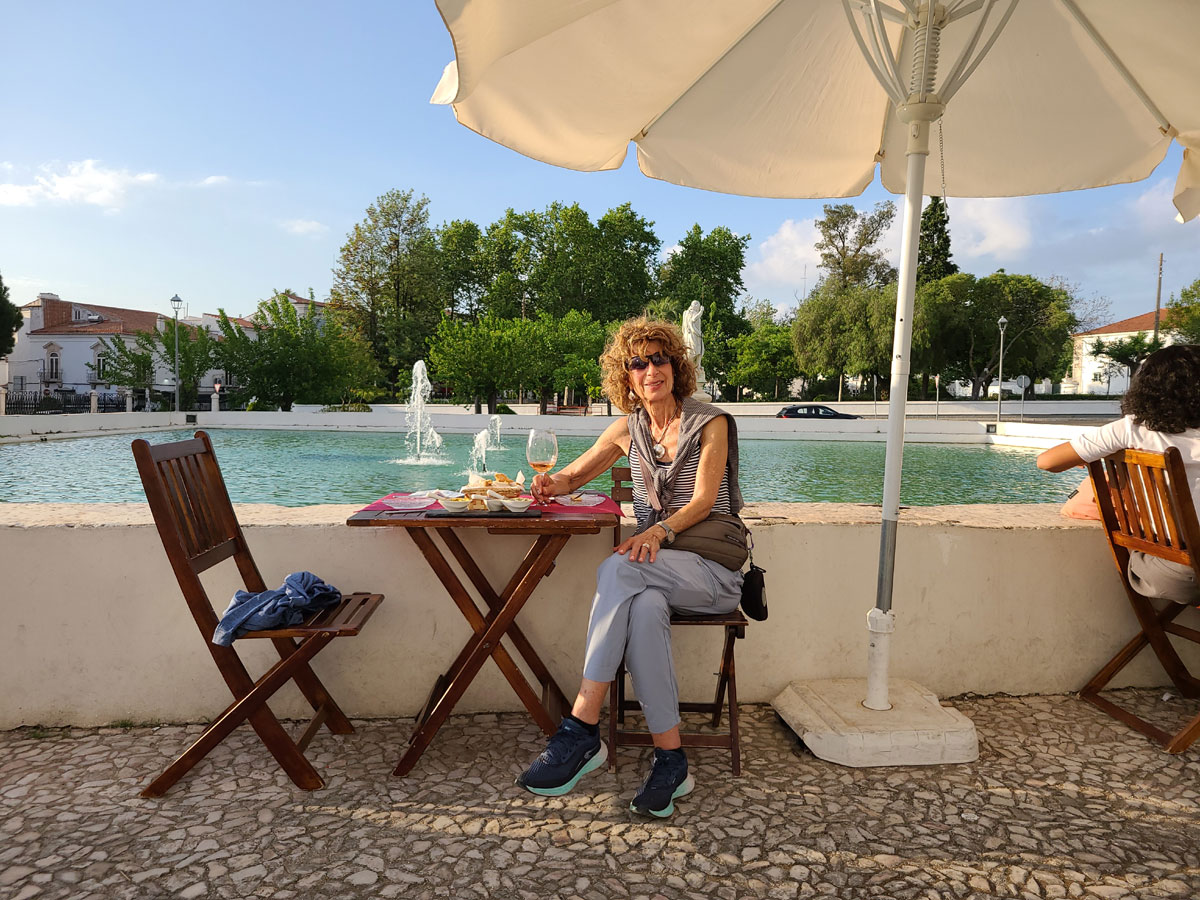Estremoz – Portugal
Estremoz, also known as The White City, is renowned for its magnificent marble in shades of pink, oatmeal, grey, black, and pure white. Sidewalks, steps, fountains, churches, and public buildings are adorned with marble from nearby quarries.
In all of Europe, Estremoz marble is second only to Italian Carrara marble.
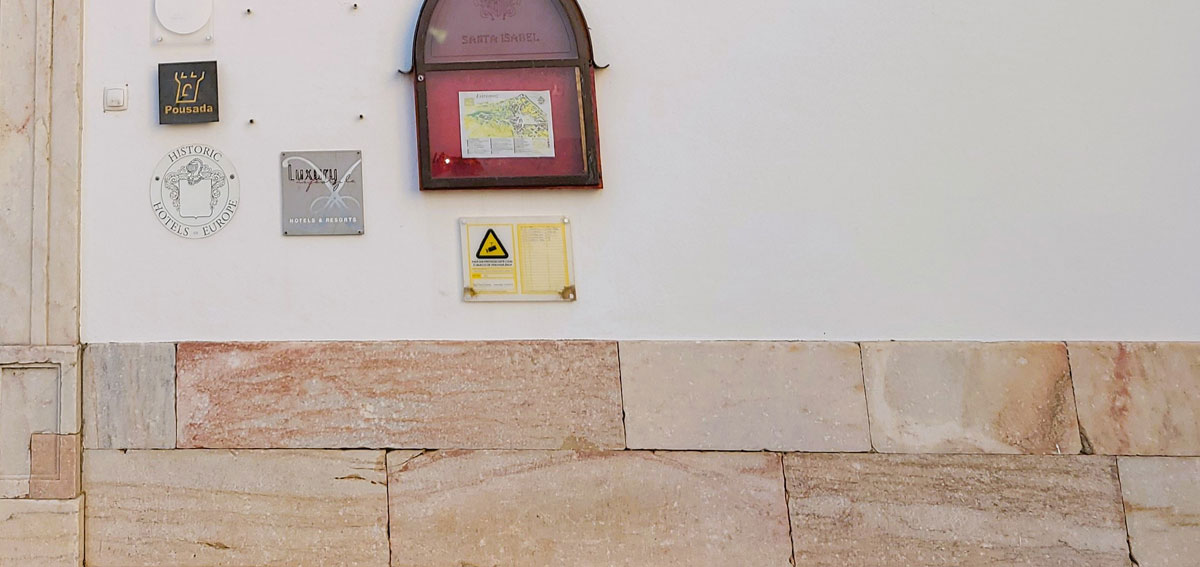 Facade lined with pink marble.
Facade lined with pink marble.On arrival in Estremoz, we wound our way up to the hilltop, where we entered the walled town via an archway carved into the fortified walls surrounding a 13th-century castle and lookout tower—Estremoz’ historical landmarks.
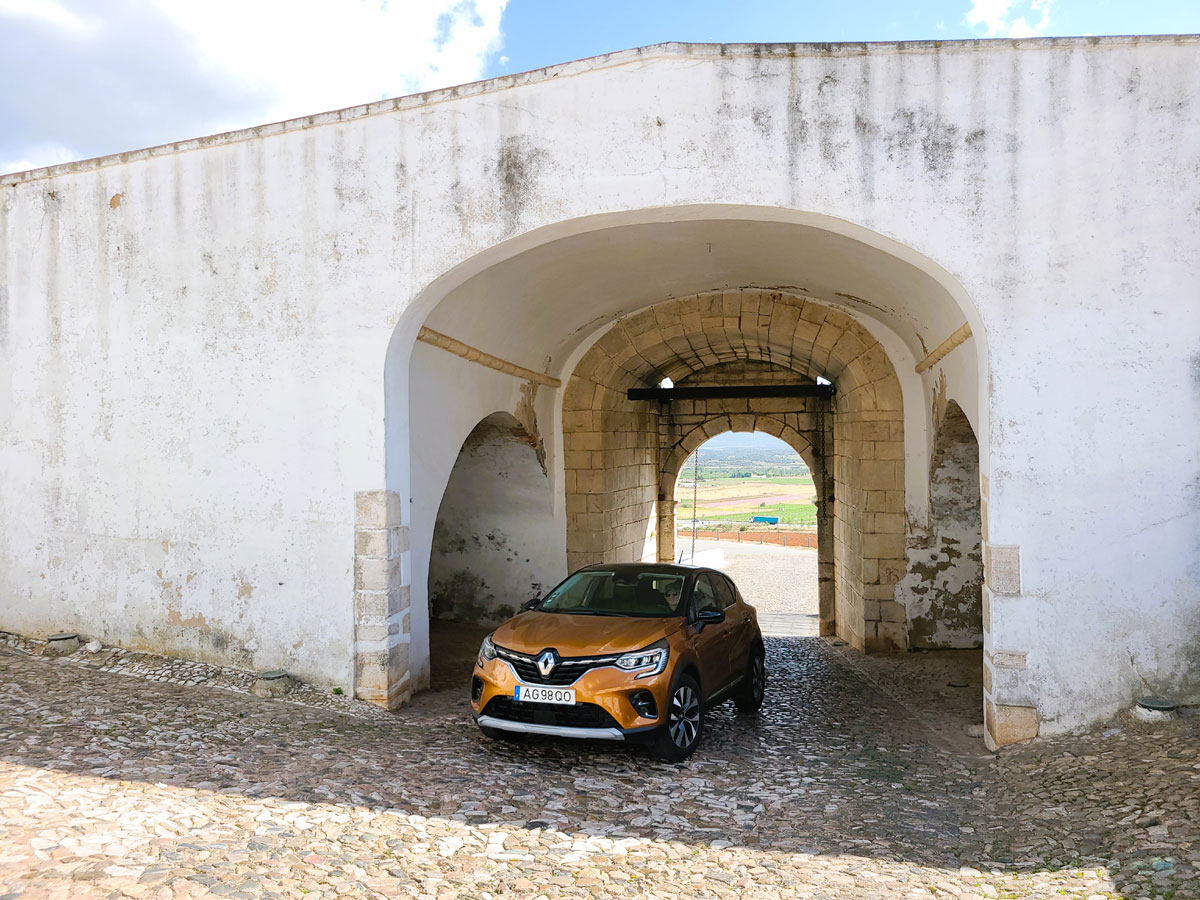
The castle was built by King Alfonso III with a bird’s eye view of the road from Spain to Lisbon, which was frequently the frontline of battles between Spain and Portugal.
In the early 14th century, King Dinis built a palace within the castle walls and married Dona Isabella, a young girl devoted to caring for the sick and the poor. This angered the king, who was both abusive and unfaithful to her. While performing her queenly duties with devotion, grace, and humility, Queen Isabella never gave up her commitment to those in need.
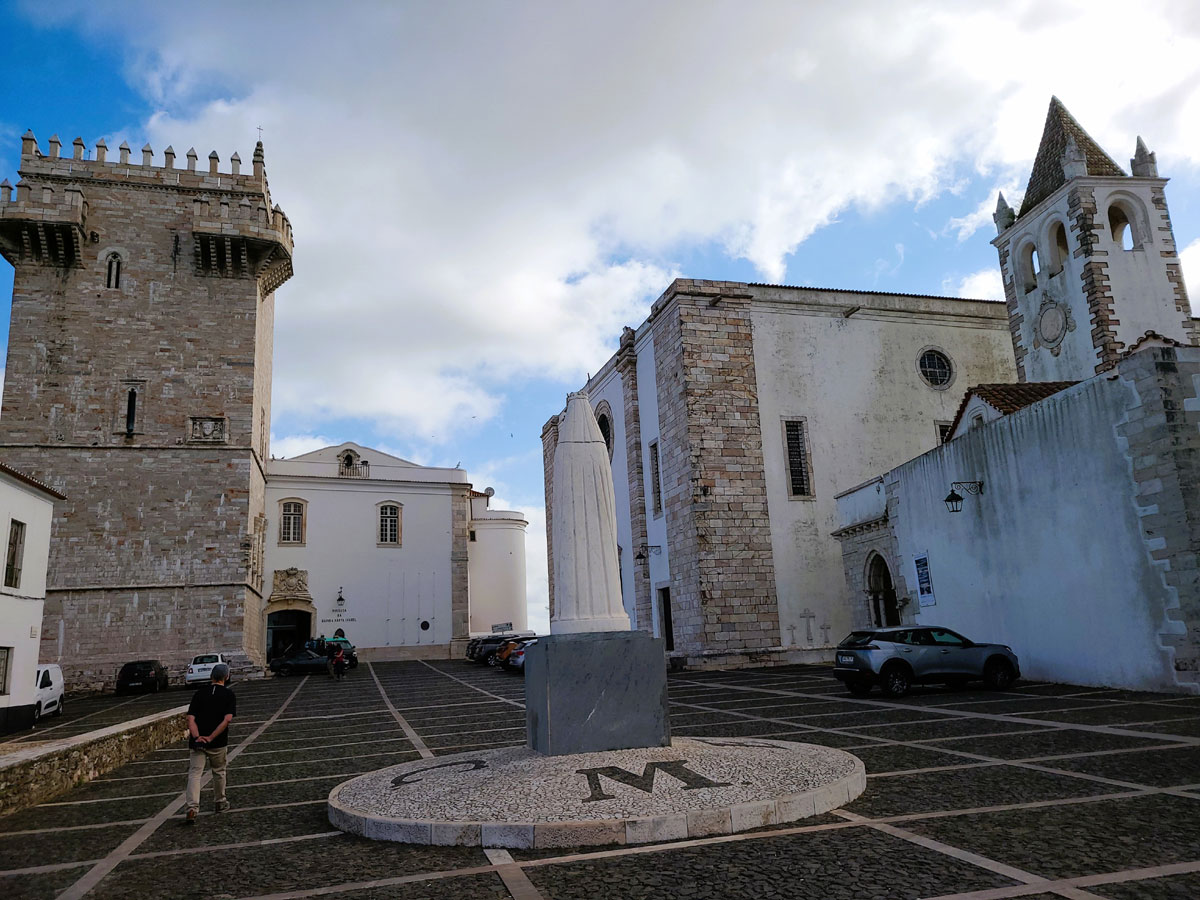 The castle tower beside the enrance to the refubished palace.
The castle tower beside the enrance to the refubished palace.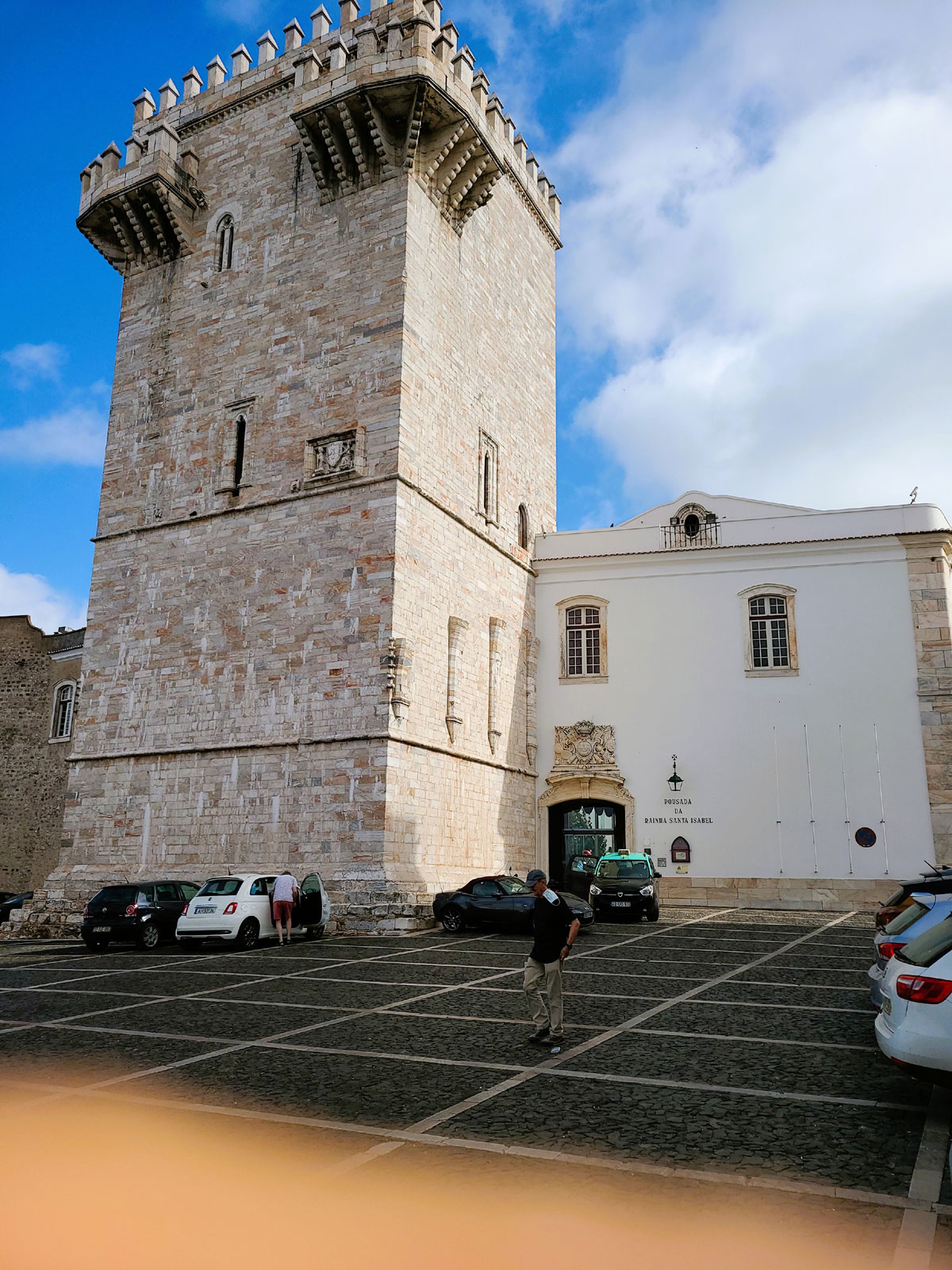
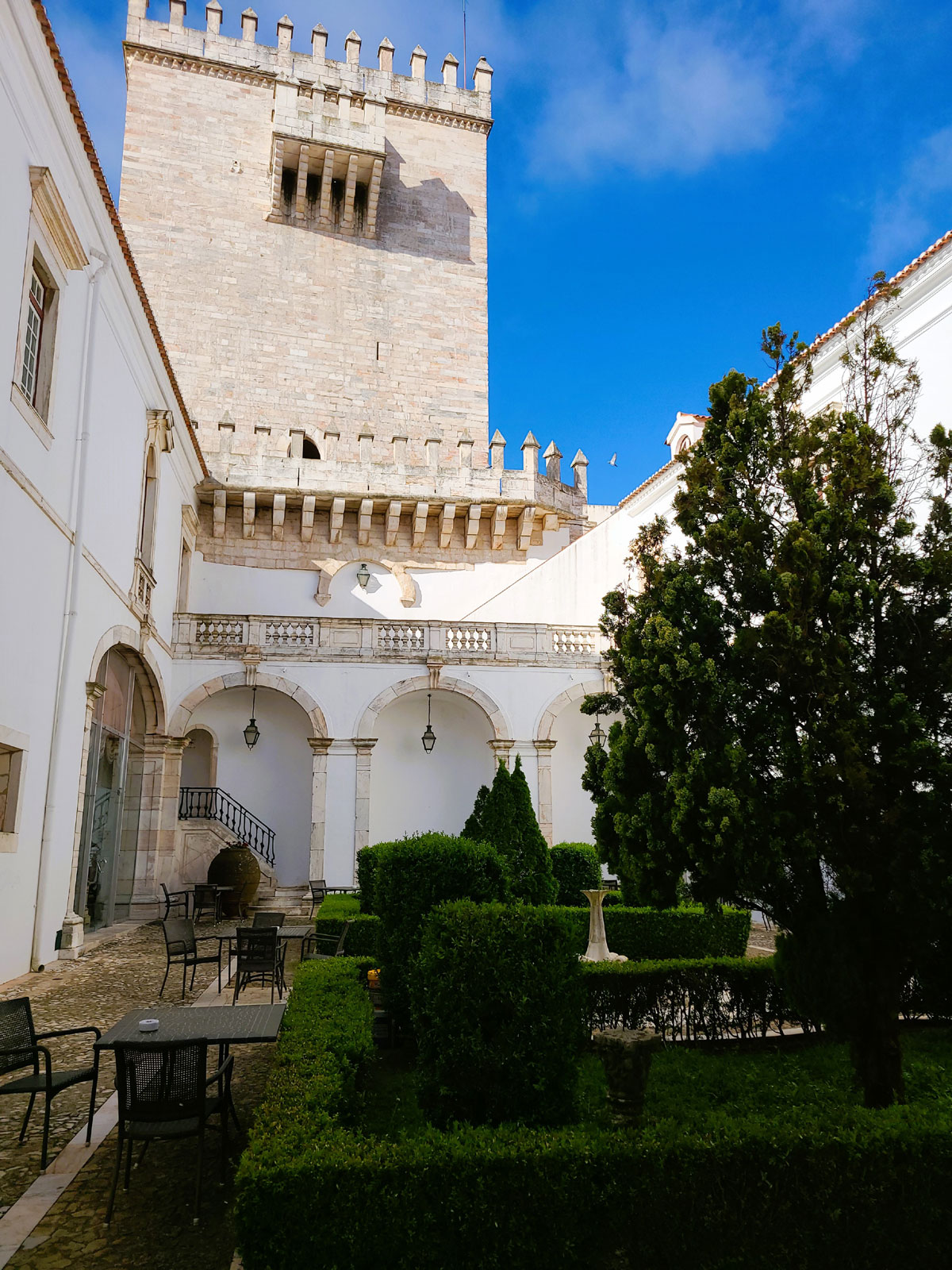
King Dinis died in 1325. Upon his death, Queen Isabella joined the Third Order of Franciscans. She died in 1336. A white marble statue of her holding a bunch of roses stands in front of the palace. Its beauty is enhanced by a backdrop of the surrounding fields, vines, and mountains as far as the eye can see.
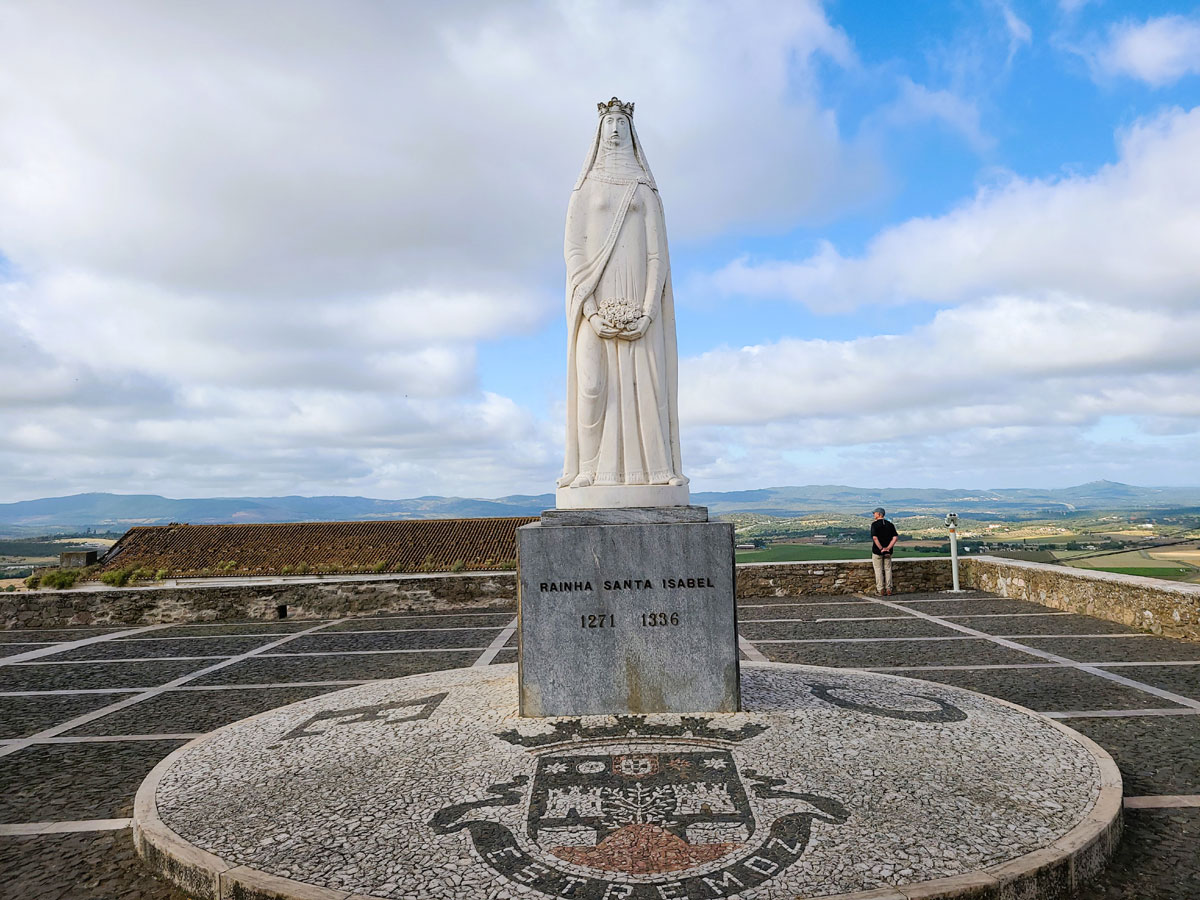
During the subsequent years, the palace housed military units and became a school in the 1950s and 1960s. In the 1970s, it was refurbished as a Pousada. Pousada Castelo de Estremoz offers the best views of Estremoz from the regal sitting room’s glass windows, the gardens, and the swimming pool.
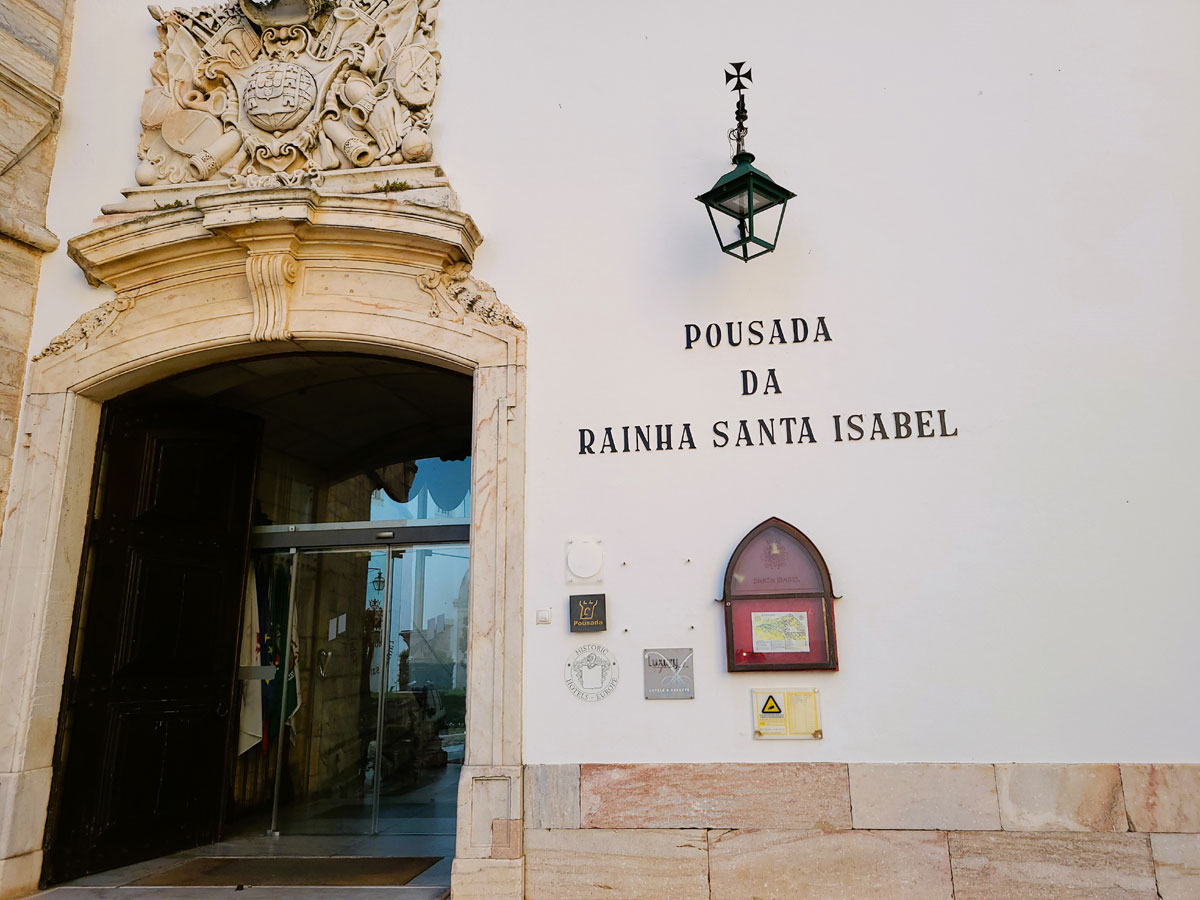
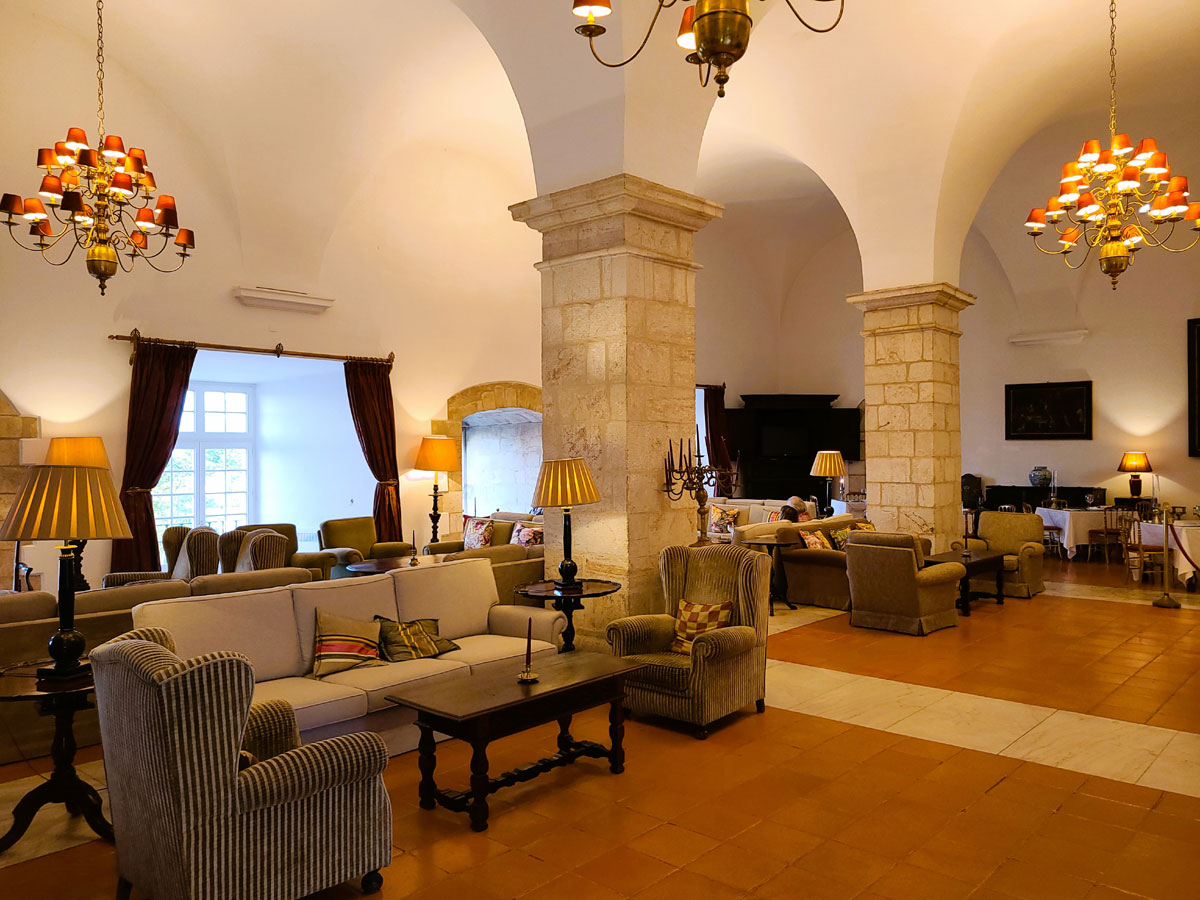
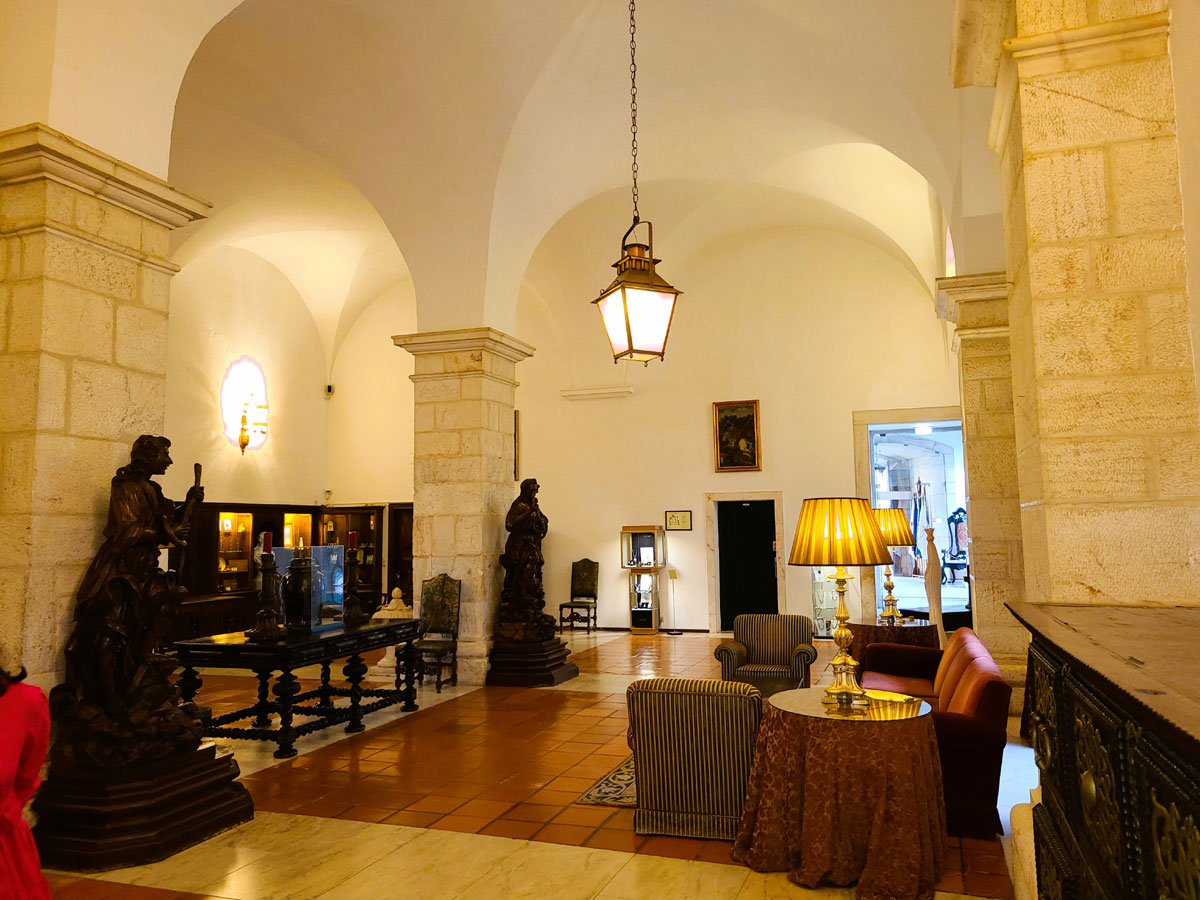
The wide, royal hallways are flanked by walls hung with 17th and 18th-century portraits, chandeliers, oversized antique high-backed chairs, armoires, candelabras, and ceramic vases. The rooms are furnished with comfortable canopied beds, fully equipped bathrooms, and minibars. While the buffet breakfasts are superb, we found the Pousada’s restaurant to be mediocre.
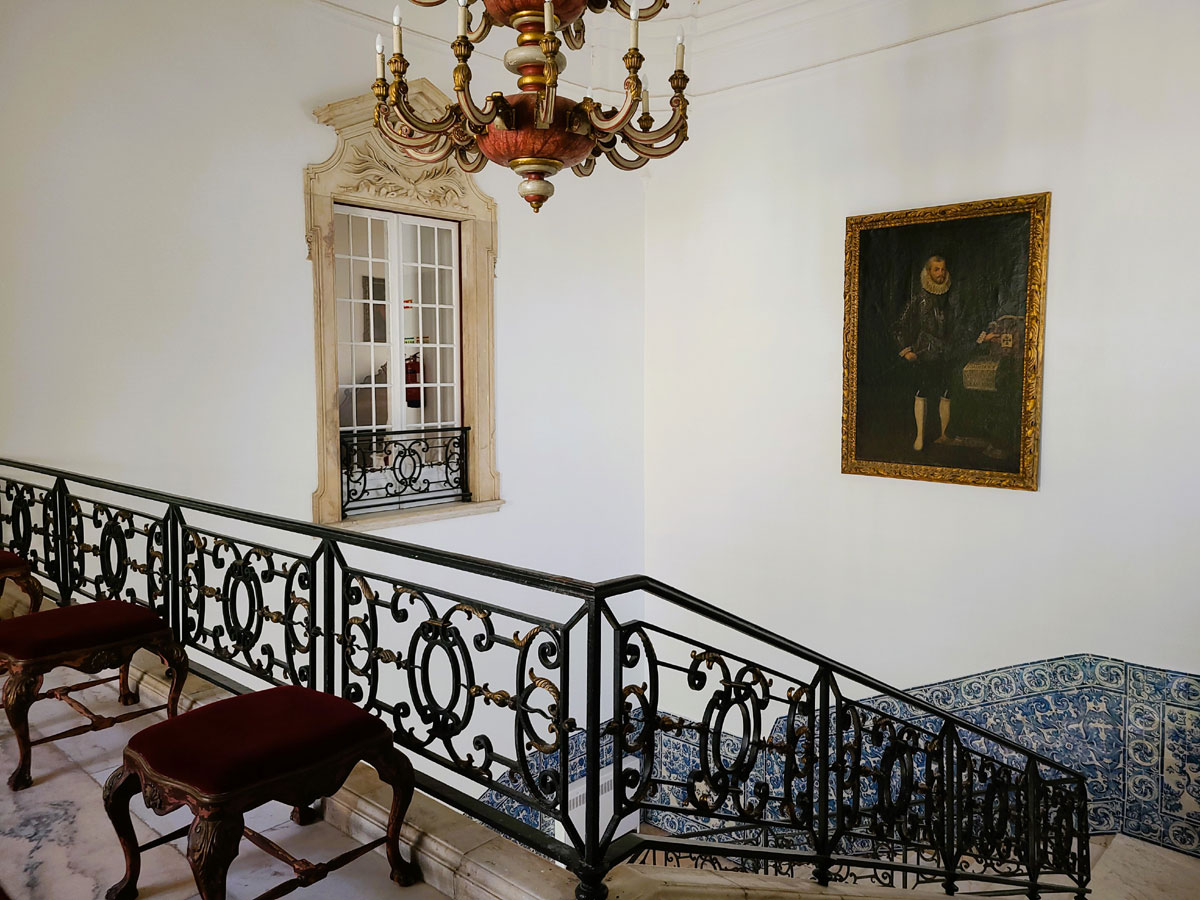
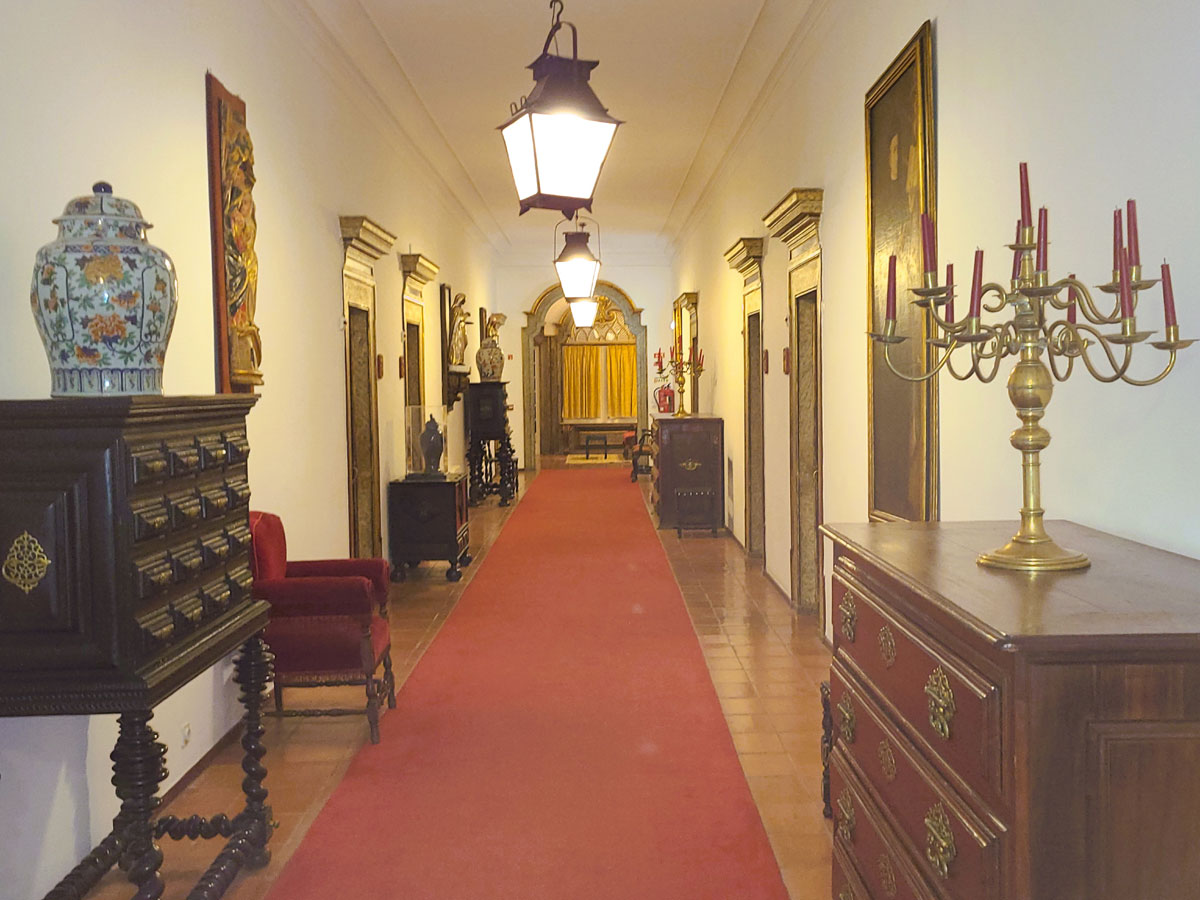
On the downhill walk to town, we marveled at the colors of marble underfoot. We passed Acadia, a late 15th-century jail from the time of King Manuel I, which was repurposed and now houses a popular, trendy restaurant.
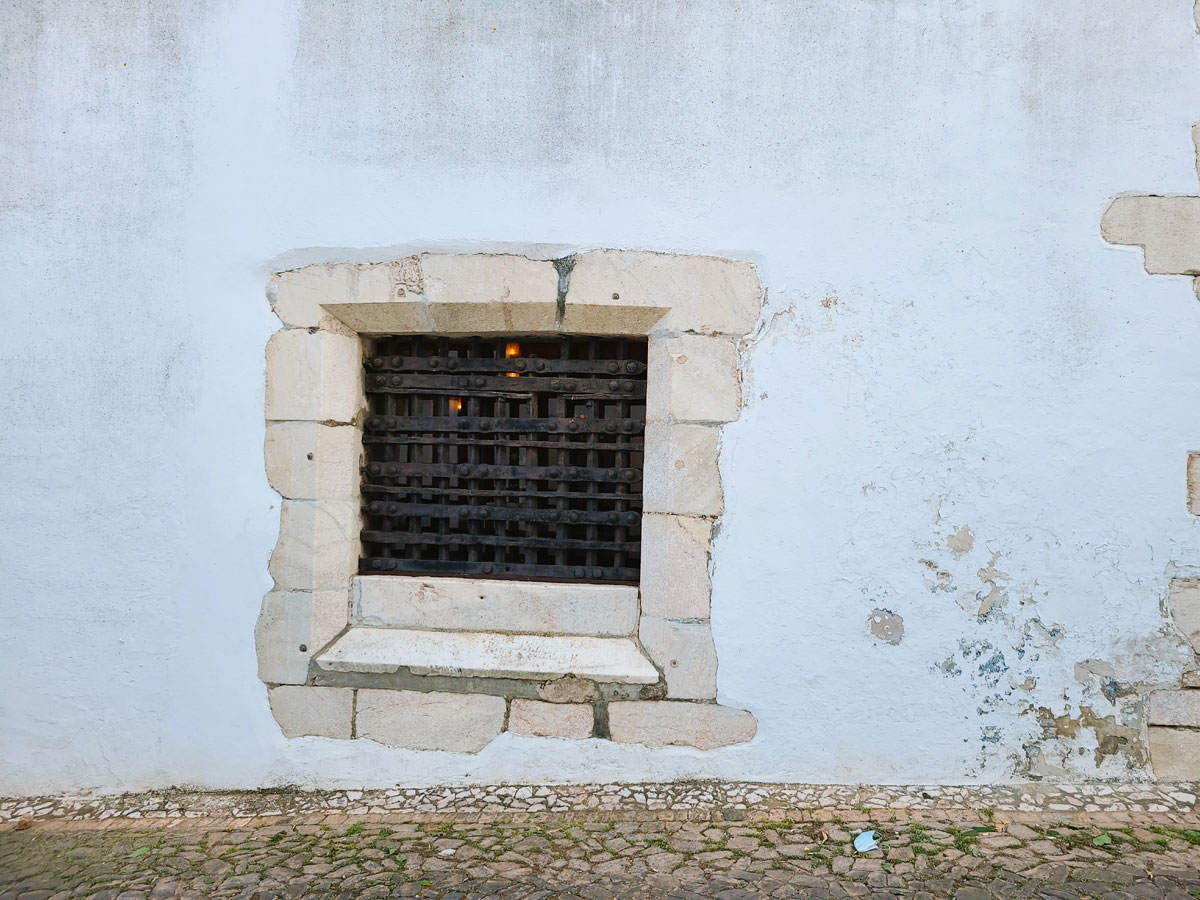 A barred window of the 15th century jail.
A barred window of the 15th century jail.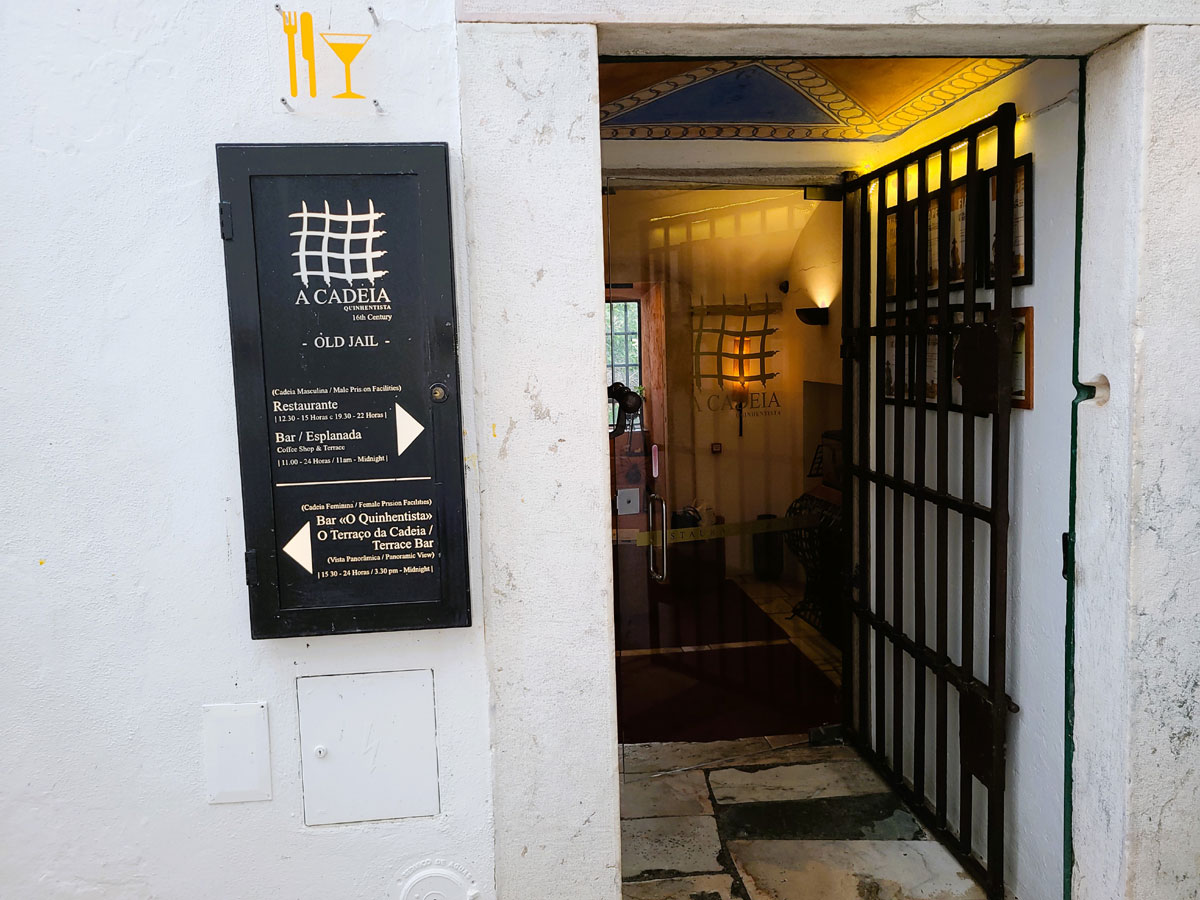 The old jail, is now Acadia restaurant.
The old jail, is now Acadia restaurant.All the towns and villages we visited during our three-week drive through Portugal were immaculate. No crumbling walls, peeling paint, or littered sidewalks. By contrast, Estremoz is sadly neglected, which is a shame given the beauty of the marble, which lines and adorns every surface.
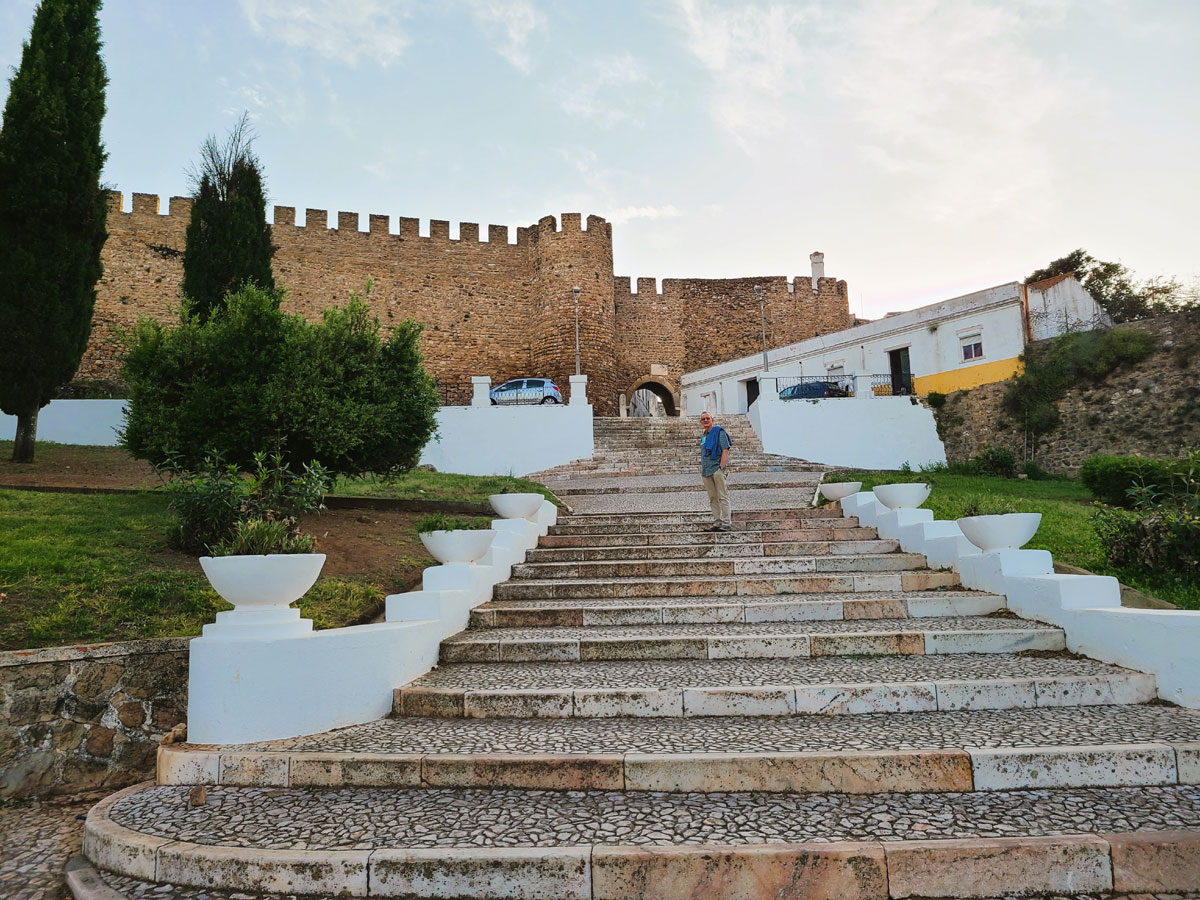 These steps leading to the castle are fronted with Estremoz marble.
These steps leading to the castle are fronted with Estremoz marble.Estremoz is also known for its nearby wineries that produce wines from full-bodied red to light-bodied sweet white. There are twenty wineries in Estremoz, among them Tiago Cabaco Winery, Outeiros Altos Vinicola, and Adega Casa Rainha Santa / Monte da Gloria.
*While we enjoyed Estremoz wines every evening in the Pousada and in town, unfortunately, we didn’t have time to visit a winery. The wineries mentioned above were recommended by Estremoz restaurant owners.
